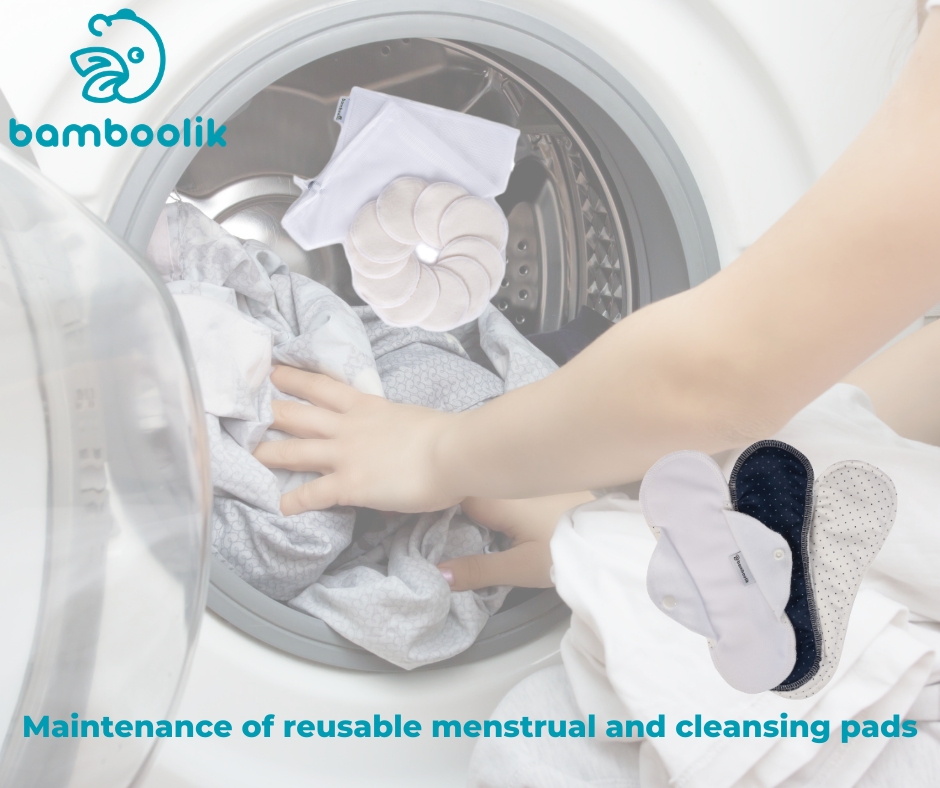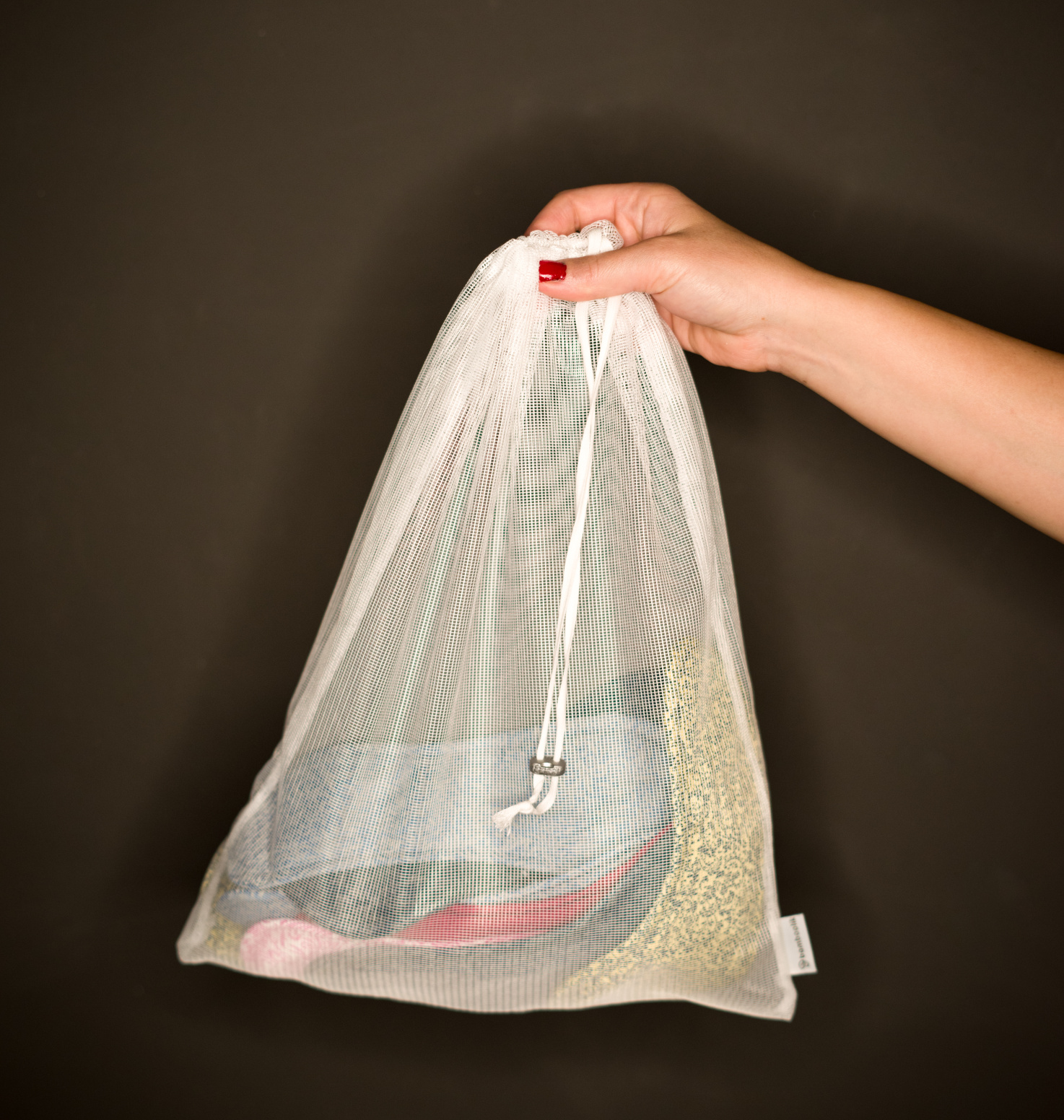We often get asked about recommended maintenance of our menstrual pads and cleansing pads. It’s quite different from cloth diapers (you don’t wash them every other day, you store them differently etc.), so we absolutely get why you ask this question! And here are our answers:
How to wash and store cloth menstrual pads?
Given these pads are used on a monthly basis, we recommend storing all the used pads until your cycle is over. Then wash them all at once.
So. How to wash cloth sanitary pads effectively, without too much effort?
This is how we do it:
- We wash cloth sanitary pads the fourth of fifth day of our cycle (at the very least). That might be the end of your cycle (those of you who are more fortunate :-)), or it could mean washing your pads in the middle of the cycle and then again at the very end.
- That applies for overnight / maternity pads, too. The postpartum period is slightly specific—in the first one or two weeks after childbirth, the bleeding is quite heavy. That might result in having to wash your pads more often than the recommended 4 days. (And, in our book, it’s absolutely fine NOT to do that, just rest and use disposable maternity pads. Giving yourself a break won’t cause an environmental crisis.) In the remaining week of the postpartum period, the bleeding resembles very much a standard period (you may even be happy with using a regular sanitary pad), so washing after approximately 4 days is sufficient.
- We store our cloth pads always without water! We keep them in either a bin or in one of our PUL wetbags (waterproof but breathable). We make sure fresh air gets to the used pads – so we never keep them folded and shut airtight. If we did, the blood wouldn’t dry and that might trigger some decaying processes that you don’t to initiate :-)
- Before we wash our pads, we soak them in COLD water (sometimes we add a pinch of salt in it). This part is absolutely necessary! Blood has haemoglobin in it which, if put in warm water, releases and stains your pads for good (and these stains won’t come off no matter what you do). Ideally, put your pads in ice cold water overnight (or a few hours at least).
- After soaking, we don’t hand wash our pads! We pour out the water that the pads were being soaked in and we put our pads straight to the washing machine. If you want (if 100% stainless pads are your goal), put a little bit of soap on any stains you don’t like. No rubbing! Just let the soap sit for a while (5 mins is enough) and then turn on the washing machine.
- Choose a longer washing programme on your washing machine and 60°C. You can add other items to your pads (like towels, tissues and other laundry you wash at 60°C). Cloth pads at this point are free of any organic residues and won’t stain anything.
- Reusable sanitary pads can be tumble dried. (For those who have cloth diapers experience and therefore are aware that PUL fabric should not be tumble dried: That is still true but: You wash and dry your pads roughly 12 times a year whereas diapers are washed more like 12 times a month. Tumble drying Diaper Covers or Pocket Diaper so often might cause damage to the delicate PUL fabric; reusable pads are washed so much less frequently that it won’t hurt them.) We’d just recommend adjusting the pads’ shape after you take them out of your tumble dryer, let them cool for a little while and they’re ready for your next cycle.
- Our sanitary pads should not be ironed - the waterproof PUL layer could be damaged. After drying, it is enough to pull the pads to the sides and smoothen them, and they will be nice and flat again.
Did your menstrual pads not wash perfectly and some stains were left behind? Let the pads soak in sodium percarbonate (preferably overnight). And what works wonders is the sun – the best natural whitener.
Last question – how to transport used pads when you’re on the go? We use our wetbags in smaller size – it’s waterproof and breathable at the same time.
What about cleansing pads?
Reusable cleansing pads are not washed as often as diapers but more often than menstrual pads. We usually wash them once a week in a small laundry bag that we also use for storing soiled pads.
We wash cleansing pads at 60oC (the temperature here is not that important as with menstrual pads, but still, higher temperatures help to dissolve make-up better, especially the waterproof kind). We also tumble-dry them.
The afore-mentioned laundry bag is by the way the best hack for washing cleansing pads! Without it, pads tend to lurk in dark corners of your washing machine or they hide in pockets of your clothes. We even think they kind of want to be odd socks – disappear for ever.
Prior to washing, we store cleansing pads in our laundry bag, we don’t soak them. And yes, sometimes, there are stains left behind (especially if we use waterproof make-up). In that case, we let the pads soak overnight in a bath made of sodium percarbonate. Then we let them air dry in the sun (if possible) and we’re good to go.



